7/29/09 A Red Square in a Yellow Circle: A look at the non-participating homes in Wisconsin's next industrial scale wind farm
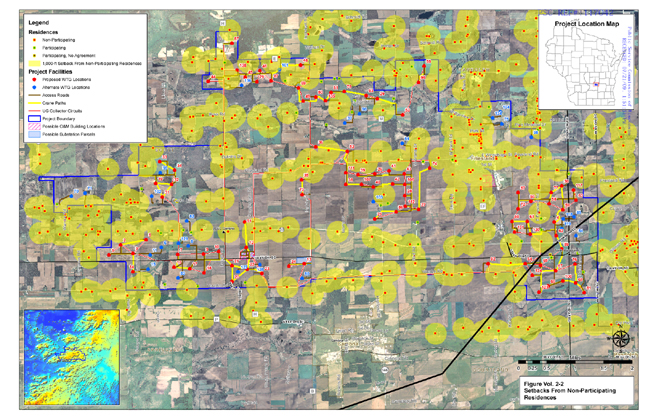
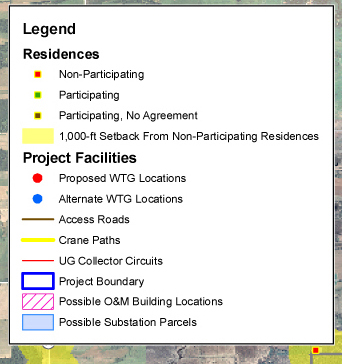 Each red square shows a home of a non-participating resident in the proposed Glacier Hills Wind Farm. [Download full- sized map by clicking here] The yellow circle that surrounds it is the 1000 foot setback proposed by the developer. The project is located in Columbia County, about 50 miles northeast of Madison in the Towns of Randolph and Scott.
Each red square shows a home of a non-participating resident in the proposed Glacier Hills Wind Farm. [Download full- sized map by clicking here] The yellow circle that surrounds it is the 1000 foot setback proposed by the developer. The project is located in Columbia County, about 50 miles northeast of Madison in the Towns of Randolph and Scott.
The 1000 foot setback was used in wind farms of Fond du Lac and Dodge counties, where residents are complaining about excessive turbine noise, severe shadow-flicker, and homes that will not sell.
While hosting land owners welcome the additional income, the quality of life for their many neighbors has been greatly diminished. Proper setbacks would have made all the difference.
Recent scientific and medical reports find 2640 feet to be the minimum setback beyond which problems with noise and shadow flicker are not a major concern. However, many residents now living amid 400 foot turbines in our state are recommending setbacks that are even further from homes.
Our hope is the Public Service Commission will reconsider the 1000 foot setback and prevent the problems that plague many residents in the PSC-approved wind farms of Fond du Lac and Dodge Counties.
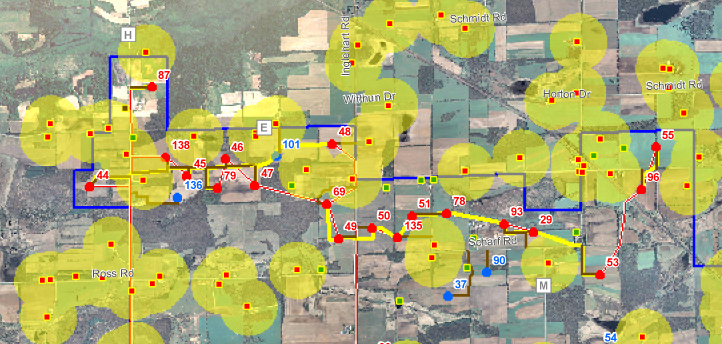
The Public Service Commission is now accepting public comments on this proposed project, its setbacks, noise limits, and other concerns.
You can post your comment to the PSC by CLICKING HERE
You can also view the entire docket for the Glacier Hills Project at the PSC website [CLICK HERE]
Enter docket number 6630-CE-302 in the boxes and click "GO"
Scroll down to read selected public comments from this project. We will be adding them as they become available.
BPWI RESEARCH NERD'S EXTRA CREDIT QUESTION OF THE DAY: Why does the State of New York want wind developers to sign an ethics code? And can Wisconsin Have one Please? CLICK HERE TO FIND OUT MORE
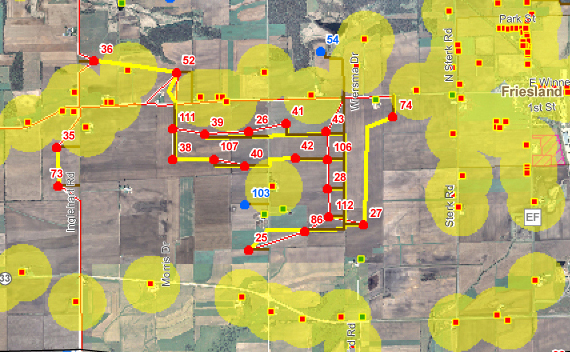
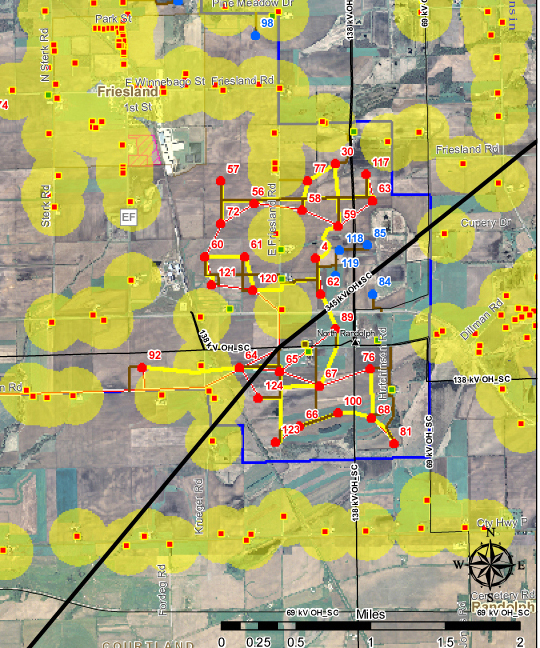

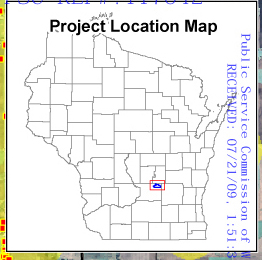
SUBMITTED 7/23/09
I would like to file a comment in opposition to the Wind project to be located in the town of Scott and Randolph.
I believe the towers and project will have a major negative impact on the rural nature of our township.
The towers themselves have a negative visual impact and are huge visual polluters.
I will be in direct visual contact with two of the towers from my house. The towers I will have impacting me are located on Jerry and Kathy Cigelski's land.
I find it interesting that the towers are located far from their house but up against my land.
I am also very concerned by the noise generated by these towers and I feel it will have a direct impact on my ability to enjoy and hunt on my land.
We are also in a major waterfowl flyway and I cant see how geese and ducks are suppose to fly through these wind tower projects.
I really feel that government policy is biased to this type of renewal energy and it is being ramm ed down our throats. I also believe that the mandate of 10% renewable energy is poor and expensive public policy that will result in increased energy rates.
In a time of continuing job loss why are we making Wisconsin an expensive place to do business and degrading the quality of life for those of us who live here?
Respectfully yours, Dr. Jim Amstadt
SUBMITTED 7/27/09:
I would like to file a comment concerning the Glacier Hills wind project, docket no. 6630-CE-302.
I have participated in the wind turbine issue in different capacities for over 2 years.
It occurs to me that the simplest way to confront the opposing opinions for siting issues would be to address them.
To say that data is scant or inconclusive concerning the effects of wind turbines on the health of the public may be because all complaints are directed to the wind developer.
Throughout the world we have left regulation, complaint resolution and compliance in the hands of the wind developer, the ultimate violator who is responsible only for their own bottom line.
Continuing a permitting process that appears to support a see no evil, hear no evil and speak no evil attitude toward industrial wind turbine projects can only lead to destructive consequences.
Modeled noise projections are submitted by a wind developer’s paid consultant based on criteria biased toward quantity installations.
This conflicts with evaluating the true environmental impact of a wind project on non participating landowners.
Background noise measurement locations for a project are carefully chosen. Samples are taken in the loudest areas of a project, at the loudest times of day.
The modeled project noise projections are compared to noise data from wind turbine model certification following IEC 61400-11 standards. IEC certified wind turbines are tested in a controlled environment under optimum test conditions.
If you read the IEC 61400-11 standards you will find that the most important testing criteria pertaining to environmental noise is not included in this certification test and should be addressed separately by a qualified acoustical engineer.
Following are some important quotes from this document:
Page 7:
“This part of IEC 61400 presents measurement procedures that enable noise emissions of a wind turbine to be characterized. This involves using measurement methods appropriate to noise emission assessment at locations close to the machine, in order to avoid errors due to sound propagation, but far enough away to allow for the finite source size.
The procedures described are different in some respects from those that would be adopted for noise assessment in community noise studies. They are intended to facilitate characterization of wind turbine noise with respect to a range of wind speeds and directions.
Standardization of measurement procedures will also facilitate comparisons between different wind turbines.”
Page 11:
“The measurements are made at locations close to the turbine in order to minimize the influence of terrain effects, atmospheric conditions or wind-induced noise.
To account for the size of the wind turbine under test, a reference distance Ro based on the wind turbine dimensions is used.”
Pages 38 and 39, the most important pages of all.
These are the areas of concern that are causing the impacts to a community; they are not reported in the wind turbines manufacturers’ certification:
“– 38 – 61400-11 © IEC:2002+A1:2006(E)
Annex A
(informative)
Other possible characteristics of wind turbine noise emission and their quantification
A.1 General
In addition to those characteristics of wind turbine noise described in the main text of this standard, the noise emission may also possess some, or all, of the following:
infrasound;
low-frequency noise;
impulsivity;
low-frequency modulation of broad band or tonal noise;
other, such as a whine, hiss, screech or hum, etc., distinct impulses in the noise, such as bangs, clatters, clicks, or thumps, etc.
These areas are described briefly below, and possible quantitative measures discussed.
It should be noted that certain aspects of infrasound, low frequency noise, impulsivity and amplitude modulation are not fully understood at present. Thus it may prove that measurement positions farther away from the wind turbine than those specified in the standard may be preferable for the determination of these characteristics.
A.2 Infrasound
Sound at frequencies below 20 Hz is called infrasound.
Although such sound is barely audible to the human ear, it can still cause problems such as vibration in buildings and, in extreme cases, can cause annoyance. If infrasound is thought to be emitted, an appropriate measure is the G-weighted sound pressure level according to ISO 7196.
A.3 Low frequency noise
A disturbance can be caused by low-frequency noise with frequencies in the range from 20 to 100 Hz.
The annoyance caused by noise dominated by low frequencies is often not adequately described by the A-weighted sound pressure level, with the result that nuisance of such a noise may be underestimated if assessed using only an LAeq value.
It may be possible to decide whether the noise emission can be characterised as having a low-frequency component. This is likely to be the case if the difference between the A and C-weighted sound pressure levels exceeds approximately 20 dB.
In these circumstances, low-frequency noise may be quantified by extending the one-third octave band measurements described in the main body of the text, down to 20 Hz. For one third octave bands, the 20, 25, 31,5 and 40 Hz bands should additionally be determined.
Narrowband spectra for frequencies below 100 Hz should be determined using a bandwidth smaller than one-half the blade passage frequency.
61400-11 © IEC:2002+A1:2006(E) – 39 –
A.4 Impulsivity
An impulsive, thumping sound may be emitted from a wind turbine due, for example, to the interaction of the blade with the disturbed wind around the tower.
Impulsivity is a measure of the degree of this thumping.
A quantification of impulsivity can be obtained from the average of several measurements of the difference between the C-weighted ‘impulse hold’ and maximum C-weighted ‘slow’ sound pressure levels.
The impulsive character can also be displayed by recording the filtered sound pressure signal using a 31,5 Hz octave band filter.
A.5 Amplitude modulation of the broad band noise
In some cases, it is possible that the broadband noise emitted by a wind turbine is modulated by the blade passage frequency giving rise to a characteristic “swishing” or “whooshing” sound.
This modulation can be displayed by recording the measured A-weighted sound pressure level with time weighting F for at least ten blade passes by the turbine.
The characteristics of this modulation can be influenced by local atmospheric conditions (see Annex C), and for this reason such conditions should be recorded during measurements.
A.6 Other noise characteristics
If the noise emission contains a whine, hiss, screech, hum, bang, clatter, click, thump, etc., then this characteristic should be reported.
As full a description as possible of the noise should be given in words, and any measurements that illustrate the nature of the noise should be taken.”
The unique noise characteristics of wind turbines that have been resoundingly reported as the very thing that affects human beings is not being measured in these certification tests.
The sound models used for the wind projects follow this lead. Models work only as well as the information that is inputted. One could say a model is much like a survey, “we will get you the results you need.”
Professional expertise has to compliment the model with additional testing parameters to come to a thorough conclusion.
Permitting a project and leaving the regulation, complaint resolution and compliance in the hands of the potential violator is negligent.
If a state agency has the responsibility to evaluate environmental impacts, those environmental studies should be submitted by a 3rd party with fair and balanced testing criteria.
In order to determine whether there are impacts post construction a 3rd party has to be responsible for complaint resolution, not the wind developer.
Regulation to determine compliance for the life of the project has to be done by a 3rd party similar to unannounced visits to a business from the Health Department or Weights and Measures.
You can’t manage what you don’t measure.
Sincerely,
Cathy Bembinster
Town of Union
SUBMITTED JULY 27, 2009:
After viewing the image showing the large number of non-participating homes that will be directly impacted by the Glacier Hills project, I respectfully request the Public Service Commission to revisit the issue of proper setbacks and noise limits.
The setbacks and noise limits proposed for this project are outdated.
Several years ago, when the PSC approved the 1000 foot setback and the 50 dbA noise levels for the Invenergy Forward Energy and Blue Sky/Green Field projects in Dodge and Fond du Lac counties, industrial scale wind development was a new industry in our state. Few Wisconsin residents had the experience of living in large wind farms, and none at all had ever lived among turbines of the 400 foot tall variety.
I’m a Wisconsin writer, cartoonist and writing teacher in the process of putting together a book proposal on what it’s like to live inside of an industrial scale wind farm.
In the course of my interviews with residents of the Blue Sky/Green Field and the Invenergy projects in Dodge and Fond du Lac Counties, I’ve met with people from nearly 20 households. I have been an overnight guest in the homes of residents who are experiencing problems associated with turbine noise, (most commonly interrupted sleep) and problems associated with shadow flicker (headache, nausea and dizziness). I've spent time with affected residents inside and outside of their homes and I've experienced these problems first hand.
Although wind developers use modeling that predicts shadow flicker at 1000 feet will be of short duration, a recent report from the Minnesota Department of Health entitled: "Public Health Impacts of Wind Turbines" (2009) found this modeling to be so inadequate the Department of Health created their own modeling and found shadow flicker can last for as long as an hour and a half.
I've witnessed it lasting longer than this. I've also seen the shadows extending at least half a mile and completely encompassing entire homes, outbuildings and yards. These are unlike any shadows most of us have ever seen. They are fast and jarring and make normal activities impossible inside and outside of a home.
The setbacks and noise limits once assumed to be safe are proving to be inadequate and thus are outdated. Ongoing problems are more severe than predicted and are having a damaging effect. I was especially troubled by the problems experienced by of some of the elderly and disabled people I’ve interviewed. I have no doubt that the quality of life for many residents living inside of these two PSC-approved wind farms has been greatly diminished, and that greater setbacks and noise limits would have made all the difference.
The stories I’ve collected from the PSC approved wind farms of Fond du Lac and Dodge Counties are so troubling that I urge the PSC to get together with the Health Department to conduct extensive interviews with residents who have been living in wind farms in our state for the last year and a half.
I've found many who are anxious to speak about their experiences not only living among turbines, but also their experiences with trying to get complaint response and remedy from the wind company or local town board.
Many of them are understandably bitter about the lack of response or concern from the wind companies, local government officials, local health department, state agencies and even the media. They are bitter about not being believed, about being marginalized as "NIMBY"s , and about having their complaints dismissed with no true investigation.
It’s clear to me that there is a disconnect between the PSC and the people living in the wind farms they approved. I’m not sure anyone is at fault in this, but surely we can make things better for those now having trouble, and we must prevent more trouble by re-examining the state's policy on setbacks and noise limits. Setbacks must be based current scientific and medical data and first hand experiences of wind farm residents in our state.
More recent studies and reports from the National Academy of Sciences (2007), Congressional Research Service (2008), Minnesota Department of Health (2009) each identify 2640 feet (half mile) as the minimum setback beyond which noise and shadow-flicker are not a major concern.
Thus, families in homes located closer than 2640 feet from industrial wind turbines, especially when surrounded by multiple turbines may indeed experience major problems with noise and shadow flicker. Terrain, wind direction, locating turbines to the east and west of a residence, and many other variables are now widely recognized to have additional impact and must be carefully considered when siting turbines near homes.
Each home in a wind farm is unique in its relation to the terrain and the turbines located around it. For example, a home with turbines to the south or north is less likely to have shadow flicker problems than homes with turbines to the east or west. Homes downwind from turbines in a valley will experience more noise that homes located up wind and above turbines.
This is an important point. The variety of reported experiences in the same wind farm owes a great deal to these variables. As no two homes are identical in their relation to turbines, no two families living in different homes located in the same wind farm will have the same experiences. The very same turbines that are causing serious problems for one family may cause almost none for another depending on their respective locations.
This is a new and important industry in our state, and I realize in many ways we are all learning as we go. But unless we understand just what the specific problems are and take them seriously enough to change our standards, more trouble will result. And we cannot understand those problems without speaking to the people now living with them.
Based on my own experiences and interviews with wind farm residents living with the same setbacks and noise limits proposed for the Glacier Hills Wind Farm, I believe the project will result in many serious problems for both participating and non-participating residents.
The PSC, as the approving agency, has the power to prevent further trouble by revisiting the issue of setbacks, noise limits and shadow flicker modeling. It also must bear the responsibility of any problems that arise because of that approval.
I believe that any serious look into the issue reach the same conclusion as have the National Academy of Sciences, the Congressional Research Service and the Minnesota Department of Health: 2640 feet is the minimum setback needed to prevent major problems with noise and shadow flicker and thus preserve and protect the health and safety of residents who are asked to live inside of the industrial wind farms in our state.
Bucky says it's the least we can do for the residents of our beloved state of Wisconsin.
Submitted by Lynda Barry
Town of Spring Valley